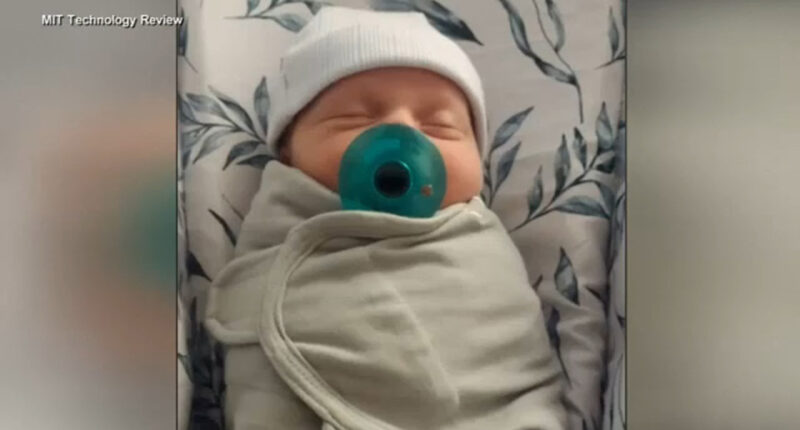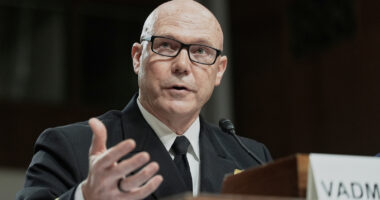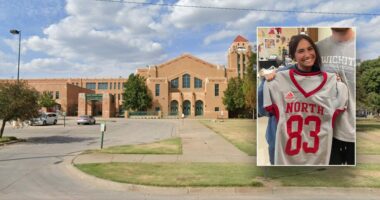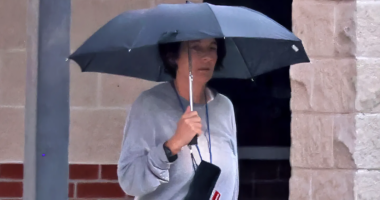Share this @internewscast.com
A baby boy was recently welcomed by an Ohio couple, originating from an embryo frozen for over three decades, marking what could be the longest duration before birth known thus far.
Through a process called embryo adoption, Lindsey and Tim Pierce selected donated embryos that had been preserved since 1994. Their aim was to start a family after dealing with infertility challenges for many years. On Saturday, their son arrived, developing from an embryo that had remained in storage for 11,148 days, setting a record according to their doctor.
This idea, dating back to the 1990s, is becoming more prevalent. Some fertility clinics and advocates, often with Christian affiliations, oppose disposing of surplus embryos, believing life starts around conception and arguing all embryos should be treated as children in need of a family.
“I believed from the beginning that these three small dreams, these embryos, had the right to life just like my daughter,” expressed Linda Archerd, 62, who provided her embryos to the Pierces.
Just about 2% of births in the U.S. are the result of in vitro fertilization, and an even smaller fraction involve donated embryos.
Presently, medical professionals estimate that approximately 1.5 million frozen embryos are stored nationwide. Many remain in uncertainty as parents deliberate over the fate of embryos created in IVF processes.
Adding complexity to the discourse is a 2024 ruling by the Alabama Supreme Court, declaring frozen embryos possess the same legal status as children. State authorities have introduced a temporary measure to protect clinics from the liabilities linked to this verdict, though concerns about leftover embryos persist.
Archerd says she turned to IVF in 1994. Back then, the ability to freeze, thaw and transfer embryos was making key progress and opening the door for hopeful parents to create more embryos and increase their chances of a successful transfer.
She wound up with four embryos and initially hoped to use them all. But after the birth of her daughter, Archerd and her husband divorced, disrupting her timeline for having more children.
As the years turned into decades, Archerd said she was wracked with guilt about what to do with the embryos as storage fees continued to rise.
Eventually, she found Snowflakes, a division of Nightlight Christian Adoptions, which offers open adoptions to donors from people like Archerd. She was also able to set preferences for what families would adopt her embryos.
“I wanted to be a part of this baby’s life,” she said. “And I wanted to know the adopting parents.”
The process was tricky, requiring Archerd to contact her initial fertility doctor in Oregon and dig through paper records to get the proper documentation for the donation. The embryos then had to be shipped from Oregon to the Pierces’ doctor in Tennessee. The clinic, Rejoice Fertility in Knoxville, refuses to discard frozen embryos and has become known for handling embryos stored in outdated and older containers.
Of the three donated embryos the Pierces received from Archerd, one didn’t make the thaw. Two were transferred to Lindsey Pierce’s womb, but just one successfully implanted.
According to Dr. John David Gordon, the transfer of the nearly 31-year-old embryo marks the longest-frozen embryo to result in a live birth. He would know: Gordon says his clinic assisted in the previous record, when Lydia and Timothy Ridgeway were born from embryos frozen for 30 years, or 10,905 days.
“I think that these stories catch the imagination,” Gordon said. “But I think they also provide a little bit of a cautionary tale to say: Why are these embryos sitting in storage? You know, why do we have this problem?”
In a statement, Lindsey and Tim Pierce said the clinic’s support was just what they needed.
“We didn’t go into this thinking about records – we just wanted to have a baby,” Lindsey Pierce said.
For Archerd, the donation process has been an emotional roller coaster. Relief that her embryos finally found a home, sadness it couldn’t be with her and a little anxiety about what the future holds next, with possibly meeting the Pierces and the baby in person.
“I’m hoping that they’re going to send pictures,” she said, noting that the parents have already sent several after the birth. “I’d love to meet them some day. That would be a dream come true to meet – meet them and the baby.”
Copyright © 2025 by The Associated Press. All Rights Reserved.

















